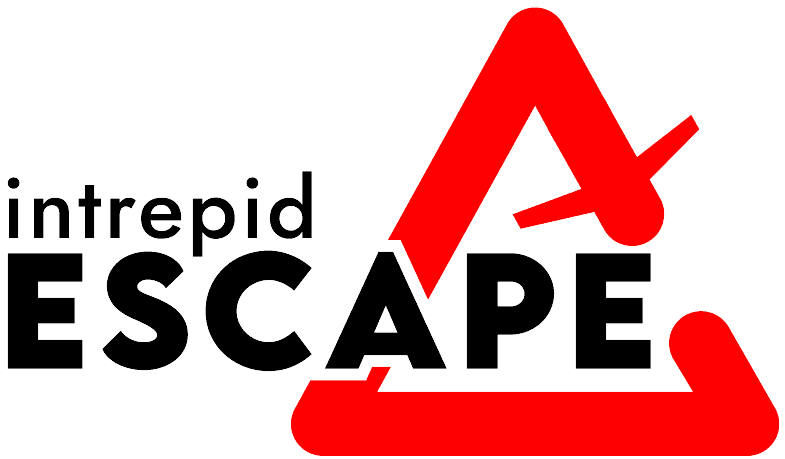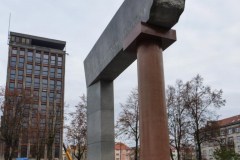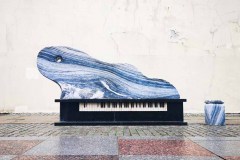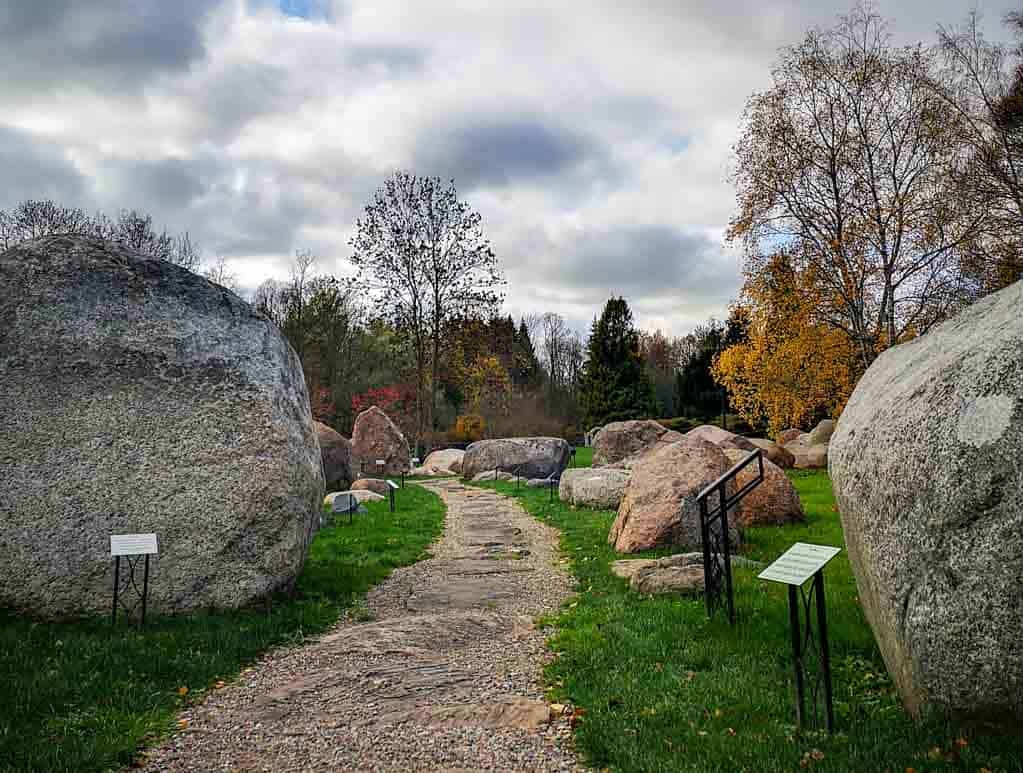Page Contents
After visiting Vilnius this summer, the Baltic Sea Coast of Lithuania was bumped up my list of places I want to see. It’s known locally as a stunning area and a bit of a hidden gem, and not only for the beautiful beaches.
It might not be the case in the neighbouring countries, but for us Brits it’s undiscovered, maybe due to its history in the Soviet Union? Based out of Klaipeda I was excited to see all this area has to offer, from countryside to nature, from local traditions to local breweries.
This piece is more than just a simple guide; I’ve included everything I recommend doing throughout the year. Sure, some activities are only an option during summer, but that doesn’t mean you can’t enjoy Klaipeda any time you like!
Klaipeda, Lithuania – Overview
Before going through the best things to do in Klaipeda, let’s discuss the essentials that I wish I knew before visiting, such as the location, getting there, and more.
Short on time?
Here are the quick things you need to know for your trip to Klaipeda
These are our reliable partners and services that I recommend and personally use on my trips.
➡️ Search for the best Tours on Viator & GetYourGuide
➡️ Look at luxury and affordable Hotels on Booking and Expedia
➡️ Options for Car rental
➡️ The best travel insurance for Latvia
➡️ Check the flight prices from the UK or the USA
➡️ Make sure you have your e-SIM!
Each offers unique value and special deals tailored just for you. Don’t miss out on these when travelling to Klaipeda!
Where is Klaipeda?
Klaipeda is a port city situated in Lithuania, on the Baltic Sea coast. It is the third-largest city in Lithuania and serves as a crucial economic and cultural hub.
Its strategic location makes it an important port and gateway to the Curonian Spit, a UNESCO World Heritage Site, and the picturesque Lithuanian coastline.
How to Get to Klaipeda?
Getting to Klaipeda is straightforward. Palanga International Airport is only about 30 km away, with flights from and to various European cities.
From the airport, you can take a bus or taxi to Klaipeda, which is quick and convenient.
If travelling by land, Klaipeda is well-connected by bus and train services from major Lithuanian cities like Vilnius and Kaunas. By car, it’s accessible via well-maintained highways, including from Vilnius.
Is Klaipeda, Lithuania Worth Visiting?
Absolutely! Klaipeda, Lithuania, is a hidden gem worth visiting, and it offers a blend of charming unique architecture, maritime heritage, and cultural scenes.
The city is the gateway to the stunning Curonian Spit, famous for its sand dunes and quaint fishing villages. Plus, as you’ll see in this guide, there are countless unique things to do in Klaipeda!
Best Time to Visit Klaipeda
The best time to check out Klaipeda is between June and August. The weather’s warm and comfortable, perfect for getting around the city and soaking up outdoor activities.
Summer’s also when you’ll catch some big cultural events, like the popular Sea Festival in July, giving you a real taste of local traditions and fun. Plus, it’s the perfect season to stroll through Klaipėda Sculpture Park with clear skies and great weather.
Spring (May to early June) and early fall (September) are solid alternatives too. You’ll dodge the big crowds and still enjoy mild, pleasant weather.
Best Tours in Klaipeda, Lithuania
20 Things to Do in Klaipeda, Lithuania
Tour the Klaipeda Old Town
This is kind of an obvious one, but no visit to Klaipeda would be complete without a tour of the historic Old Town, the heart of Klaipėda.
In a place like this it’s always worth taking the tour as there will be so much knowledge and history you’re missing out on.
From Hitler’s speech to Theatre Square, to the metal sculptures dotted around the city. The tour also taught us about its Prussian history, cobblestoned streets and the German ‘fachwerk’ style.
It’s not a huge city (the 3rd largest in Lithuania), so a tour of 1-2 hours is enough. If you have enough time, do consider the Lithuanian Sea Museum and the Castle Museum, which aren’t far and very fun for a couple of hours.
The best way to visit the old town is to sign up for a walking tour, which covers all the best spots as well as some hidden gems that tourists don’t often see!
Go Kitesurfing at Svencele
Svencele is a so-called kitesurfing Mecca! It’s one of those sports that has a fantastic community around it, friendly and welcoming.
In off-season there’s barely anything here, but during peak season it’s thriving. The accommodation and restaurants are mostly housed in shipping containers, which give it an industrial hipster vibe.
Then the sunsets across the lagoon are unbeatable. This is certainly somewhere I want to come back in summer.
Learn Wakeboarding at one of Europe’s biggest cable parks
Moving on from Kitesurfing to wakeboarding! Let me introduce the 313 Cable Park. Created by wakeboarders for wakeboards, they pitch themselves as not another wakeboard park.
And it seems they have taken it to the next level. Most parks have two towers, yet they have five. They’re set up for beginners and pros alike.
If you don’t want to wakeboard then there are swimming pools, saunas, terrace bar, outdoor gym, tennis, massage and skateboarding.
Canoe at Night Along the Dane River
Wait a second, at night? Are you sure? Yes. Take a guided tour along the river in hand-made wooden canoes, at night. We explored the embankments of Lithuania’s oldest city, Klaipeda.
It’s a spooky feeling, getting into a canoe at night, under the light of the old-fashioned flame or our torch at the front of the canoe.
We paddled down to the city centre, passing the magnificent ship of Meridianas. The tour last around 1.5 – 2 hours and Wet Weim also offer canoe tours to the Curonian Spit, birdwatching tours and Canoeing at Trakai Castle.
See the Countryside by Bike
Lithuania has embraced cycling and the Baltic Sea Coast has several cycling routes.
You can cycle north as far as Latvia, and to a lot of places on this list. As I mention below, the most cost-effective way to see the Curonian Spit is by bike, but why stop there? It’s a pretty flat coastline, perfect for casual cyclists.
There are several bike-rental companies in Klaipeda and a list of trails and a variety of distances on Map my Ride, or look at Cycling Holidays in Klaipeda for tours and further information.
Walk along the Sand Dunes
At the beginning of this article, I talked about the Curonian Spit, but here, we’re discussing the Sand Dunes specifically. There are two main spots that people flock to when it comes to these dunes.
First up, the Dead Dunes and the Nagliai self-guided walk, which takes you right into the heart of the dunes.
Next, there’s the Parnidis Dune, more of a viewpoint than a hike. My advice? Visit both. Just be prepared for crowds during peak times, especially when cruise ships are around—it can get pretty hectic!
But trust me, these spots are worth it. At the Dead Dunes, you’ll feel like you’ve stepped out of Europe entirely, maybe even off the planet. Then, catching the sunset and the view over Kaliningrad from the Parnidis Dune is something you won’t forget.
Visit the Curonian Spit, a UNESCO World Heritage Site
The Curonian Spit has been on my radar ever since I visited Vilnius a few months back, and it’s been calling my name ever since. This unique spot on the Baltic Sea Coast of Lithuania is often described as a miracle shaped by sand, wind, and people.
There’s so much to take in here—whether it’s the fact that the Spit is officially connected to the Russian province of Kaliningrad, the charming fishing villages, the abundance of migrating birds, or the villages buried in the dunes.
But here’s the thing: visiting the Curonian Spit can get pricey if you’re bringing a car. You’ve got the ferry fee, plus extra charges at certain checkpoints on the island, unless you book a tour ahead of time.
Once you’re there, there’s a ton to do. Visit the town of Nida, explore the Hill of Witches, admire the sand sculptures, go cycling, hit the sandy beaches, or, of course, check out those stunning sand dunes.
If you want to make the most of your visit, I recommend a private 6-hour tour. It gives you plenty of time to explore at your own pace and soak up everything this incredible site has to offer!
Stop at the Fishing Village of Dreverna
The old fishing village of Dreverna on the Curonian Lagoon shore is now a regeneration success story. It’s now a modern ship port with unique wooden holiday houses overlooking the lagoon.
In addition to that there’s now a list as long as your arm of things to do here, for adventurers and families.
It has a children’s play area, swimming pool, sauna and hot tub. You can rent boats, Stand-up paddleboards, peddle boats and even learn to kitesurf.
During high season they also offer a ferry to the Curonian Spit for only €5, and you can even take your bike. Now that’s the insider’s tip I was talking about, it’s by far the cheapest way to get there.
Find the “Capital of Stones”
The town of Mosėdis is a beautiful gem in Samogitia and nicknamed the “Capital of Stones”. It’s a pretty enough town to visit on its own, but also home to the Vaclovas Intas’ National Stone Museum.
It’s a collection of rocks and stones brought to Lithuania from as far back as the ice age. It’s a fascinating collection, established by local hero Vaclovas Intas.
It offers a collection of fossils, minerals (precious and semi-precious stones). And the park, which is also part of the museum, it is completely free to walk around.
Discover the Baltic Mythology Park
Up in northern Lithuania, near the town of Darbėnai, you’ll come across the Baltic Mythology Park. It’s tucked away in a gorgeous forest setting with stunning scenery all around.
We got to learn about the sculptures and the mythological beliefs behind them. Back in Pagan times, people worshipped these gods, and the mythology dates back to Prussian times. It’s a fascinating spot, and some of the sculptures are seriously impressive.
Definitely worth checking out, and the best part? The entrance is just 4 euros! You can even bike there along the 30km trail from Klaipeda.
Chill Out at the Beach Bar
I’ve already talked a bit about the beach life in the outdoor & active section, from kitesurfing to exploring the sand dunes. It’s also something you might not associate with Lithuania or Klaipeda.
But just outside of Klaipeda you’ll find the beach bar of Baltas Ruonis. Perfectly positioned overlooking the beach and Baltic Sea, it’s the perfect place to watch the world go by and the everyday life in Klaipeda.
The cosy restaurant also has a delicious menu of local food, burgers and seafood. Yum.
Take a Tour of the Local Brewery
I don’t go to too many places without finding a local beer or brewery.
And the Baltic countries have some of the best craft beers I’ve tasted! Svyturys is a newly opened sister brewery from Brooklyn Brewery, so I guess this might limit its ‘craft brewery’ status.
It doesn’t however limit the creativity; I especially like the Red Brick Workshop, a small-batch experimental series. We took a tour of the beer museum and had a tasting on at the top bar.
The beer is great, and the restaurant isn’t bad either, stop by when you’re in Klaipeda. Speaking of beer, a pub that came highly recommended by locals was Faksas Klaipėda, right in the heart of the city by the river.
Sip Local Lithuanian Wine
Lithuania is certainly not famous for its wine production, and its climate is not conducive to grape vineyards.
Therefore, the wine uses a Nordic-style production made from apples and wild-berries. We spent a few hours having a wine-tasting at Memel Wine, with an amazing variety of wines made from gooseberry, blackcurrant, raspberry and quince.
You wouldn’t even know one of the wines isn’t made from grapes, and its award-winning. The winery is not too far from Dreverna, to the south of Klaipeda.
Eat a Local Delicacy
During my two visits to Lithuania, they have a few local dishes the locals insist you try. The main ones that stuck out to me are as follows:
- Bulviniai blynai (potato pancakes). Potatoes seem to form a part of every dish in Lithuania, and this one was one of my favourites. Grated potatoes, eggs and onions fried until brown. My rating: 7/10.
- Cepelinai (potato dumplings). Sticking with the spuds, if there was one dish everyone said I must try it’s this one. The verdict: filling, sickly and too much! It tastes okay, but it’s a bit heavy and greasy for my liking, but you must try it. There are meat and vegetarian options. My rating: 5/10.
- Šaltibarščiai (cold beetroot soup). I had a hard time believing this could taste any good, and guess what? I was right. I couldn’t understand the appeal to this one, try it for yourself. My rating: 2/10!
- Kepta Duona (fried bread). Served as more of a snack, I first discovered this in a pub in Vilnius, served with my pint. I was hooked! So simple and so delicious, made from Lithuanian dark rye bread its fried with a lot of salt, garlic and oil. My rating: 9/10.
- Raguolis or sakotis (traditional spit cake). Finally, the traditional cake served for special occasions, yet I seemed to try it a few times. The spikes are made from dripping batter so it’s quite a skill to make, and very moorish. My rating 7/10.
- Kastinys (cream butter). This spicy sour cream butter is usually served with boiled potatoes or Samogitian pancakes filled with minced meat. Either way this is delicious and was one of my favourites, another one that’s not for those of you counting calories! My rating 8/10.
Walk the Forest of Junipers
This is an area with a unique landscape. It’s known as the Forest of Junipers, or the Šaukliai tundra. The Salantai Regional Park has 125 species of plants growing here, including the 6-metre-high junipers.
And dotted around you’ll find boulders deposited from moving glaciers 12-13 thousand years ago during the ice-age.
There’s a short walk with a viewpoint allowing you to educate yourself along the walk and take in the stunning scenery.
Walk Along the Raised Bog
Habitats such as wetlands and bogs are becoming increasingly important worldwide, for the protection of wildlife and their impact on the environment.
So, it’s great to see that the Aukstumala Raised Bog is being so well protected. Apparently, it’s one of the “most famous raised bogs in the world”, and that’s because it’s the first scientifically explored raised bog, by German botanist CA Weber in 1902.
The nature trail has some educational posts which highlight the important of them and how fragile the ecosystem is.
It’s also a great place to spot birds, hosting over 90 species of cranes, geese, duck and other bird species finding shelter on their migration.
Visit a Bird Ringing Station
Speaking of birds, now this is a true bird-watchers paradise. Located at Vente Horn peninsula (south of Klaipeda) is one of the most important bird-ringing stations in Europe.
In fact, it’s the largest ‘bird trap’ in Europe. Many birds migrate here and don’t cross the water, creating a funnel effect for ringing the birds. As many as 1-200,000 birds pass through in one day. We learnt about the importance of ringing the birds, mostly in understanding their migration patterns.
And don’t worry, all birds are ringed and released without harm. Some of these birds have been reported to go as far as South Africa. Amazing.
Try your Hand at Ancient Pottery Making
Close to the town of Palanga you can try your hand at black pottery making! It’s the oldest clay burning technique in Lithuania, and one of the few countries to preserve this craftsmanship tradition.
Along with learning the tradition you can buy hand-made pots, vases, jars and kitchenware. To really appreciated how hard they are to make, you need to have a go yourself!
I recommend booking this experience with a local guide.
Learn about the Traditional Blacksmith Trade
Traditional trades such as blacksmiths have been in decline in countries like Lithuania. However there seems to be on a resurgence lately, particularly in the area of Kretinga.
We visited one close to Mosėdis (where you’ll find the pottery making). I met with Edvardas who showed me the technique and explained how he learned the trade.
He was basically self-taught! Unlike Blacksmiths in the UK, most of the trade is on bespoke items for decoration or functional purpose. Blacksmiths in the UK are usually dedicated to shoeing horses.
For a visit contact Edvardas on Instagram or ask your local guide.
Learn About Local Traditions
There were two things on my itinerary where I met some amazing local people to learn about their history and traditions. However, both need to be organised with a guide, mainly due to the fact you’ll need a translator.
Firstly, close to Dovilai I met a descendant of Prussian Lithuanian and was invited into his authentic home. We tasted coffee, pie and dried fish. It was an interesting insight.
The second chance was meeting the amazing Alma in her clay house. She runs a homestay, but the real treat is to drink her herbal tea.
There is everything from energising tea, tea for your digestion and tea to help you climax. Yes, you read that correctly!
Her house is close to Mosėdis so you can combine this with a visit to the stone museum. Again, this is something you need to organise with a local guide.
Where to Stay in Klaipeda, Lithuania
Here are some great places to stay in Klaipeda for a fabulous trip.
Luxury: National Hotel
I based myself in Klaipeda and stayed at the National Hotel, a lovely hotel right in the heart of the city with everything you need.
The breakfast and service were amazing, and I had everything right on my doorstep. I highly recommend it. Everything you need in the article it within a 2-hour drive from Klaipeda.
Mid-Range: Art Hotel Bohema
Art Hotel Bohema in Klaipėda, nestled in the Old Town, is a short walk from the city center and 2.4 km from the Akropolis Shopping Centre. It offers free WiFi and comfortable double and family rooms equipped with TVs, desks, and electric kettles.
Private bathrooms include showers and hairdryers. Enjoy delicious meals and drinks in the on-site restaurant and café. Breakfast is available each morning.
The hotel is also conveniently located 2.1 km from the New Ferry Terminal.

Budget: Franciscan Guesthouse
Located 20 km from Palanga Amber Museum, Franciscan Guest House in Klaipėda offers accommodations with seating areas and full-day security.
Enjoy the picnic area, family rooms, and facilities for disabled guests. Rooms feature wardrobes, kettles, private bathrooms, and free WiFi; some have patios and garden views.
Take advantage of the barbecue facilities, indoor and outdoor play areas, and ski storage. Skiing, cycling, and hiking are nearby activities, and you’ll love the stay.

Conclusion About Klaipeda Lithuania
As you can understand from this travel guide, Klaipeda, Lithuania, is a great place to visit. It’s a city by the sea with a lot of history and cool places to see.
You can walk around the old part of the city, try tasty food, and enjoy the sea views. It’s also close to the beautiful Curonian Spit, and I couldn’t recommend a visit any more!
My trip to Lithuania was sponsored by Interreg South Baltic Programme project “Baltic Sea Tourism Centre“. Nonetheless, the photos and opinions are all my own (as always).


































